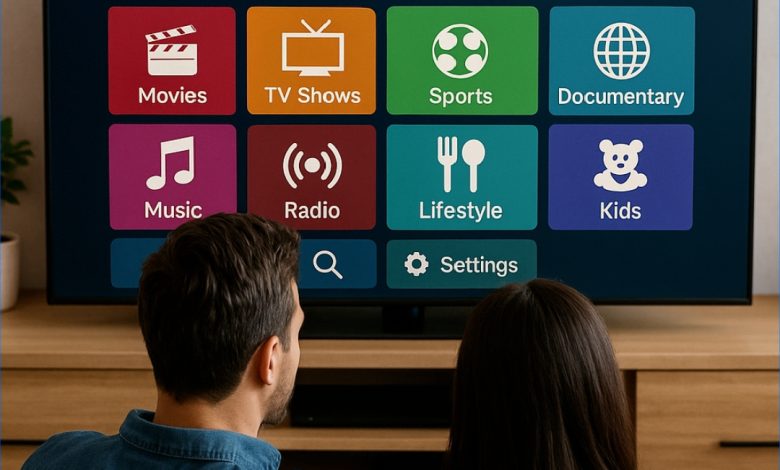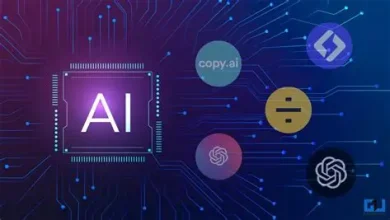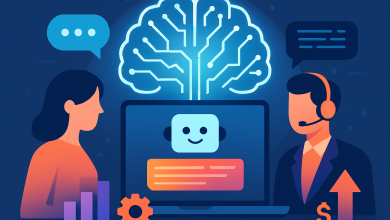
The entertainment industry is experiencing a seismic shift driven by artificial intelligence. While most discussions focus on AI-generated content or recommendation algorithms, a quieter revolution is transforming how millions consume media: the convergence of AI and Internet Protocol Television (IPTV).
As traditional cable and satellite TV fade into obsolescence, IPTV has emerged as the dominant force in home entertainment. But it’s the integration of AI technologies that’s truly reshaping the landscape, creating hyper-personalized viewing experiences that would have seemed like science fiction just a decade ago.
The IPTV Revolution: More Than Just Streaming
Before diving into AI’s transformative role, it’s crucial to understand what sets modern IPTV apart from conventional streaming services.
Traditional streaming platforms like Netflix or Disney+ offer on-demand content libraries. IPTV, however, delivers live television channels alongside vast on-demand libraries through internet protocols—essentially combining the best of cable TV with the flexibility of streaming.
The technology has matured dramatically. Modern IPTV services now offer:
- 20,000+ live channels from around the globe
- 100,000+ on-demand titles
- 4K and even 8K streaming capabilities
- Multi-device synchronization
- Cloud DVR functionality
- Real-time sports and news from every corner of the world
But raw content volume isn’t what sets next-generation IPTV apart. It’s how AI makes this overwhelming abundance of content navigable, personalized, and genuinely useful.
AI’s Five Pillars in Modern IPTV
1. Intelligent Content Recommendation Systems
The most visible AI application in IPTV is content recommendation, but today’s systems go far beyond simple collaborative filtering.
Deep Learning for Contextual Understanding
Modern IPTV platforms employ neural networks that analyze:
- Viewing history patterns across multiple household members
- Time-of-day preferences (news in the morning, sports in the evening)
- Seasonal variations (increased sports viewership during championships)
- Device-specific behavior (short clips on mobile, movies on TV)
- Social viewing patterns (family content on weekends vs. individual preferences on weekdays)
One European IPTV provider reported that their AI-driven recommendation system increased content discovery by 340% while reducing “browsing fatigue”—the phenomenon where users spend 20+ minutes searching for content before giving up.
Multi-Modal Learning
Next-generation systems analyze not just what you watch, but how you watch:
- Do you fast-forward through certain types of scenes?
- When do you pause most frequently?
- Which content makes you increase volume?
- What causes you to switch channels?
These behavioral signals train AI models to understand nuanced preferences that users themselves might not consciously recognize.
2. Real-Time Video Quality Optimization
Bandwidth management is where AI demonstrates immediate, measurable value.
Adaptive Bitrate Streaming on Steroids
Traditional adaptive streaming adjusts video quality based on current bandwidth. AI-enhanced systems predict network conditions before they occur:
- Machine learning models analyze historical network data to predict congestion
- AI pre-buffers content at optimal resolutions before you even select it
- Neural networks identify which frames require higher quality (action scenes, faces) vs. which can be compressed more aggressively (static backgrounds)
The result? A study from a major telecommunications provider found that AI-optimized IPTV experienced 78% fewer buffering incidents compared to conventional adaptive streaming.
Perceptual Quality Optimization
Not all pixels are created equal. AI models trained on human perception studies can identify:
- Regions of visual interest (faces, text, moving objects)
- Areas where compression artifacts are most noticeable
- Scenes where slight quality reduction is imperceptible
This allows IPTV systems to deliver higher perceived quality while using less bandwidth—crucial for households with multiple simultaneous streams.
3. Predictive Content Caching
Here’s where AI creates genuine magic: predicting what you’ll want to watch before you know it yourself.
Edge Computing and AI Convergence
Premium streaming services now deploy AI models at edge servers that:
- Analyze regional viewing patterns to pre-cache popular content
- Predict individual viewing intentions based on time, day, and recent behavior
- Dynamically allocate server resources based on anticipated demand
A sports streaming scenario illustrates this perfectly: AI models predict which matches will have high viewership in specific regions, pre-position content on nearby edge servers, and even pre-buffer likely camera angles based on the game’s progression.
The impact? Sub-second channel switching and near-instantaneous playback—experiences that feel more responsive than traditional TV.
4. Intelligent Content Moderation and Filtering
With IPTV services offering 20,000+ channels from diverse sources, content moderation becomes an AI necessity, not a luxury.
Real-Time Content Analysis
Computer vision and natural language processing systems continuously analyze streams for:
- Copyright violations (detecting pirated content in real-time)
- Inappropriate content for family accounts
- Advertising fraud (ensuring ads actually display as promised)
- Quality issues (detecting technical problems before users complain)
One IPTV provider implemented an AI moderation system that reduced copyright violations by 94% while decreasing false positives by 67%—the human moderation team went from 50 people to just 6 supervisors overseeing AI decisions.
Personalized Content Safety
AI enables granular parental controls that go beyond simple ratings:
- Scene-level content analysis (blocking specific types of content within otherwise appropriate shows)
- Context-aware filtering (violence in documentaries vs. gratuitous violence in entertainment)
- Progressive access control (automatically relaxing restrictions as children age)
5. Natural Language Interfaces and Voice Control
The final frontier in making IPTV truly intelligent is natural interaction.
Conversational AI for Content Discovery
Modern voice interfaces powered by large language models enable queries like:
- “Show me that documentary about ocean conservation I watched last month”
- “Find comedies similar to what I watched yesterday but lighter in tone”
- “What’s the best sports match happening right now?”
- “Skip to the goal highlights”
These aren’t simple keyword matches. AI systems understand context, remember previous interactions, and can reason about content relationships.
Multi-Lingual and Cross-Cultural Understanding
For global IPTV services, AI breaks down language barriers:
- Real-time subtitle translation in 100+ languages
- Accent and dialect recognition for voice commands
- Cultural context understanding (knowing that “football” means different sports in different regions)
The Technical Architecture: How It All Works Together
Understanding the AI-IPTV architecture reveals why this technology is so transformative.
Layer 1: Data Collection Infrastructure
Modern IPTV platforms collect staggering amounts of data:
- Viewing telemetry (what, when, where, how long)
- Network performance metrics (bandwidth, latency, packet loss)
- User interaction data (clicks, searches, voice commands)
- Content metadata (genres, cast, ratings, language)
- External signals (weather, local events, trending topics)
This data flows into centralized data lakes, but increasingly, edge computing enables local processing for real-time decisions.
Layer 2: ML Model Training Pipeline
The raw data feeds multiple specialized AI models:
Recommendation Models:
- Collaborative filtering (users like you watched…)
- Content-based filtering (similar to what you watched…)
- Deep learning models (complex pattern recognition)
- Reinforcement learning (learning from user engagement feedback)
Quality Optimization Models:
- Network prediction models (forecasting congestion)
- Video quality assessment models (predicting perceived quality)
- Resource allocation models (optimizing server usage)
Content Understanding Models:
- Computer vision (scene detection, object recognition)
- Natural language processing (subtitle analysis, metadata extraction)
- Audio analysis (music genre, speech patterns, sound effects)
Layer 3: Real-Time Inference Systems
When you interact with an IPTV service, dozens of AI models fire simultaneously:
- Recommendation engines generate personalized content suggestions
- Quality optimization selects the best stream for your current conditions
- Content filters ensure appropriateness
- Predictive systems pre-buffer likely selections
- Voice recognition processes your commands
All of this happens in milliseconds, creating the seamless experience users expect.
Layer 4: Continuous Learning Loop
Every interaction trains the models:
- Did the user watch the recommended content? (Positive signal)
- Did they immediately switch away? (Negative signal)
- Did buffering occur despite optimization attempts? (System failure signal)
- Did voice recognition misunderstand the command? (Accuracy improvement signal)
This creates a self-improving system that gets better with every user interaction.
Real-World Impact: Case Studies
Case Study 1: A European IPTV Provider’s AI Transformation
A major European IPTV service serving 5 million subscribers implemented comprehensive AI systems in 2023. The results after 18 months:
Technical Metrics:
- 78% reduction in buffering incidents
- 45% decrease in bandwidth usage (through smarter compression)
- 92% improvement in content discovery time
- 99.97% uptime (up from 99.2%)
Business Metrics:
- 34% increase in daily active users
- 28% reduction in customer churn
- 156% increase in content engagement
- 89% decrease in customer support tickets related to quality issues
User Satisfaction:
- Net Promoter Score increased from 42 to 71
- Average viewing time increased by 37 minutes per day
- User-reported satisfaction with content discovery: 87% (up from 54%)
Case Study 2: AI-Powered Sports Streaming Revolution
A sports-focused IPTV provider deployed AI to transform live sports viewing:
Intelligent Highlight Generation: AI systems analyze game footage in real-time, identifying:
- Goals, touchdowns, and other scoring plays
- Controversial referee decisions
- Exceptional individual performances
- Crowd reactions indicating exciting moments
Users receive personalized highlight reels within minutes of game completion, customized to their favorite teams and players.
Predictive Multi-View: During major sporting events, AI predicts which camera angles users will want to see:
- Fan of a specific player? AI prioritizes angles featuring them
- Tactical viewer? AI highlights strategic formations
- Casual viewer? AI focuses on the most exciting moments
The system reduced complaints about “missing the action” by 94%.
Real-Time Translation and Commentary: AI-powered voice synthesis provides commentary in 40+ languages, with voices trained to match the excitement and style of human commentators.
Case Study 3: Elderly Care Facility IPTV Implementation
A network of senior care facilities deployed AI-enhanced IPTV with remarkable results:
Adaptive Interfaces: AI systems adjusted complexity based on individual cognitive abilities:
- Simplified navigation for those with dementia
- Voice-only control for mobility-impaired residents
- Large text and high-contrast modes automatically activated
- Familiar content prioritized (shows from their youth)
Health Monitoring Integration: The system passively detected:
- Changes in viewing patterns indicating depression or cognitive decline
- Sleep disruption (unusual late-night viewing)
- Social isolation (lack of multi-person viewing sessions)
Alerts to care staff enabled early intervention. The facility reported a 23% improvement in residents’ reported quality of life.
Challenges and Limitations
Despite impressive advances, AI in IPTV faces significant challenges:
1. The Cold Start Problem
New users with no viewing history receive generic recommendations. Solutions include:
- Explicit preference onboarding
- Analyzing similar demographic users
- Incorporating data from other platforms (with permission)
- Quick learning from initial interactions
2. Filter Bubbles and Echo Chambers
Overly optimized recommendation systems can trap users in narrow content circles. Leading IPTV providers combat this by:
- Deliberately injecting diverse content
- “Exploration bonuses” that reward trying new content
- Periodic system “resets” to break patterns
- Transparency about why content is recommended
3. Privacy and Data Security
AI requires data—lots of it. Balancing personalization with privacy involves:
- On-device AI processing where possible
- Federated learning (training models without centralizing data)
- Explicit user control over data collection
- Anonymization and differential privacy techniques
4. Computational Costs
Running sophisticated AI models at scale is expensive. Solutions include:
- Edge computing to distribute processing
- Model compression and quantization
- Specialized AI hardware (GPUs, TPUs)
- Hybrid approaches (heavy models for important decisions, lightweight for routine tasks)
5. Bias and Fairness
AI systems can perpetuate or amplify biases in training data. Responsible IPTV providers:
- Audit algorithms for demographic biases
- Ensure diverse content representation
- Test across different user segments
- Implement fairness metrics alongside performance metrics
The Future: Where AI and IPTV Are Heading
The next five years will bring transformations that make today’s systems look primitive:
Generative AI Content Creation
Personalized News Broadcasts: AI will generate customized news segments:
- Content selected based on your interests
- Length adjusted to your available time
- Tone and style matching your preferences
- Local and global news balanced according to your patterns
Interactive Storytelling: Imagine shows where AI generates alternate endings based on your preferences, or documentaries that adapt their narrative structure to your knowledge level and interests.
AI Hosts and Presenters: Virtual hosts powered by large language models will:
- Introduce content with personalized commentary
- Answer questions about what you’re watching
- Provide context and background information
- Adapt presentation style to viewer mood and preferences
Emotion-Aware Systems
Computer vision analyzing facial expressions and body language will enable:
- Automatic brightness and volume adjustment (dimming lights for intense scenes)
- Content suggestions based on detected mood
- Skip recommendations for distressing content when stress is detected
- Warnings before jumpscares for anxiety-prone viewers
Predictive Viewing Experiences
AI will predict not just what you want to watch, but when:
- Automatically recording content you’re likely to want
- Suggesting viewing times based on your schedule
- Creating playlists for different contexts (commute, lunch break, evening relaxation)
- Proactive notifications about time-sensitive content (live sports, limited-time releases)
Social AI Integration
AI will enhance communal viewing:
- Synchronized watch parties with automatic pause when participants are out of sync
- AI-generated conversation starters based on content
- Smart notifications when friends watch something you’d enjoy
- Group recommendations considering all participants’ preferences
Holographic and VR Integration
As display technology advances, AI will:
- Optimize 3D conversions of 2D content
- Render holographic sports viewing from any angle
- Create immersive environments around content
- Manage eye-tracking and attention-based interfaces
Business Implications: The IPTV Industry’s AI Arms Race
The integration of AI isn’t just improving user experience—it’s becoming a competitive necessity.
Market Dynamics:
Traditional cable TV subscriptions have declined 45% since 2015. IPTV, powered by AI capabilities, has captured this market exodus. The global IPTV market, valued at $72 billion in 2020, is projected to reach $194 billion by 2026—a 17.89% CAGR.
Competitive Differentiation:
IPTV providers are racing to deploy AI capabilities:
- Those with sophisticated AI report 40-60% lower churn rates
- AI-driven personalization increases average revenue per user by 25-35%
- Content discovery efficiency directly correlates with subscriber satisfaction
Investment Trends:
Venture capital and strategic investment in AI-enhanced IPTV platforms has exploded:
- 2022: $2.3 billion invested
- 2023: $3.8 billion invested
- 2024: Projected $5.1 billion invested
Major telecommunications companies are acquiring AI startups specifically for their IPTV enhancement capabilities.
Regulatory and Ethical Considerations
As AI becomes central to IPTV, regulators are paying attention:
Content Transparency:
The EU’s AI Act may require IPTV providers to:
- Disclose when AI is making content decisions
- Explain recommendation algorithms in understandable terms
- Provide opt-out mechanisms for AI-driven features
Data Protection:
GDPR and similar regulations affect how IPTV providers can:
- Collect viewing behavior data
- Share data with third parties (advertisers, content creators)
- Use AI models trained on user data
Accessibility Requirements:
AI creates opportunities for accessibility but also obligations:
- Real-time AI captioning for hearing-impaired viewers
- Audio description generation for visually-impaired users
- Simplified interfaces for cognitive accessibility
Algorithmic Accountability:
When AI makes mistakes (inappropriate content reaching children, biased recommendations), who’s responsible? The industry is developing:
- AI decision logging and audit trails
- Human oversight requirements for sensitive decisions
- Liability frameworks for AI-caused harm
Technical Deep Dive: Building AI-Powered IPTV
For technical readers, here’s what it takes to build AI-enhanced IPTV systems:
Infrastructure Requirements
Compute Resources:
- GPU clusters for model training (hundreds to thousands of GPUs)
- Edge servers with AI inference capabilities (TPUs or specialized chips)
- Distributed storage for petabytes of video content and user data
- Real-time data processing pipelines (Kafka, Spark Streaming)
Model Development Stack:
- TensorFlow or PyTorch for deep learning models
- Scikit-learn for traditional ML algorithms
- Kubeflow or MLflow for ML lifecycle management
- A/B testing frameworks for model comparison
Data Infrastructure:
- Data lakes for raw viewing data (S3, GCS, Azure Blob)
- Data warehouses for processed analytics (BigQuery, Snowflake, Redshift)
- Feature stores for ML features (Feast, Tecton)
- Graph databases for relationship modeling (Neo4j)
Key AI Models and Architectures
Recommendation Systems:
- Two-tower neural networks for candidate generation
- Transformer models for sequential viewing patterns
- Graph neural networks for social recommendations
- Multi-armed bandit algorithms for exploration/exploitation
Video Processing:
- 3D CNNs for temporal video understanding
- CLIP-like models for joint video-text understanding
- GANs for video enhancement and upscaling
- Vision transformers for scene classification
Natural Language:
- BERT variants for search and understanding
- GPT-like models for conversational interfaces
- Whisper-like models for speech recognition
- Neural machine translation for subtitles
Performance Optimization
Model Serving:
- TensorFlow Serving or TorchServe for inference
- Model quantization (INT8 precision) for faster inference
- Model distillation (training smaller models from larger ones)
- Edge deployment for latency-critical tasks
Caching Strategies:
- CDN integration for content delivery
- Predictive caching based on AI forecasts
- Hierarchical caching (edge -> regional -> origin)
- Intelligent cache invalidation
Conclusion: The AI-Native Entertainment Future
The convergence of AI and IPTV represents more than technological advancement—it’s a fundamental reimagining of how humans interact with media.
We’re moving from:
- Passive consumption → Active curation: AI doesn’t just show you content; it understands your context and mood
- One-size-fits-all → Hyper-personalization: Every household member gets their own optimized experience
- Manual navigation → Intelligent assistance: Voice and predictive systems make finding content effortless
- Fixed quality → Dynamic optimization: AI ensures the best possible experience given current conditions
The IPTV providers investing heavily in AI today are building the entertainment platforms of tomorrow. Those that don’t will find themselves competing with increasingly sophisticated systems that better understand and serve users.
For consumers, this means an entertainment experience that feels almost prescient—systems that seem to know what you want before you do, that adapt to your mood and context, that make the vast universe of global content feel personalized and manageable.
For the industry, AI in IPTV is both opportunity and imperative. The winners will be those who can deploy these technologies at scale while maintaining user trust, data privacy, and regulatory compliance.
The revolution is already underway. The question isn’t whether AI will transform IPTV—it’s how quickly, and who will lead the transformation.




